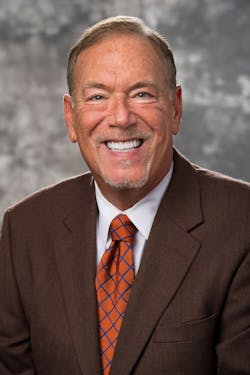#Goodjobs and #Airportfails: U.S. Airports are Getting Their Wings on Smart Use of Social Media
When the power failed at Hartsfield-Jackson Atlanta International Airport this past December, the response by the world’s busiest airport included a relatively new tactic for airports — talking about it on Twitter.
Hartsfield’s communications team used the social media platform to convey information that made a real difference for frustrated travelers. The tweets included a list of hotels that still had available rooms (some for free for those who were stranded), real-time updates from the FAA, Georgia Power, Delta Airlines and the mayor, and even an uplifting article detailing acts of heroism carried out by everyday folks during the outage. The team capped the event with the following tweet: “A massive thank you to our employees and passengers alike for their acts of kindness during this experience. We know it’s been a challenging few days in #ATL, but your patience and humanity have eased the task of getting the airport back to normal.”
The outage stranded thousands of passengers, forced the cancellation of about 1,400 flights and made national news. By using social media to communicate with the public proactively, Hartsfield avoided looking uncaring and out of touch. #goodjob.
But here’s the rub: At the time of the outage, the airport had a grand total of about 63,000 Twitter followers. That might sound like a lot, but roughly 280,000 people pass through Hartsfield every day. Viewed through that lens, Hartsfield’s Twitter following is on the paltry side, with enormous room for growth.
We point this out, not to pick on Hartsfield, but instead to make the broader point that U.S. airports could do more to leverage social media. Consider the potential advantages:
- Social media platforms can reach enormous numbers of people, unmediated by news organizations. (Consider that Facebook has about 2.2 billion users worldwide, or that President Trump has more than 40 million followers on Twitter alone).
- The communications are instant—no small consideration in an industry in which timeliness is critical.
- Skillful use of social media can demonstrate an airport’s immediate concern, compassion and hands-on involvement. Perceived lack of forthrightness and engagement on the part of airlines and airports is among travelers’ biggest gripes. Clearly, in our information-driven society, saying “no comment” or otherwise failing to engage on difficult issues and events runs contrary to the business goals of maintaining customer loyalty and building a strong brand.
But of course, there is another side to this story. If the Hartsfield power outage illustrates the upside of social media, the false alarm that gripped Hawaii this past January highlights the risks. In the false alarm, an employee sent the following emergency alert to mobile phones across the state: “Ballistic missile threat inbound to Hawaii. Seek emergency shelter. This is not a drill.” About 40 minutes of panic ensued.
Without proper social media safeguards, airports that ramp up their social media activity potentially run the risk of causing a similar panic in a crisis situation. Statistically speaking, a higher volume of posts on the likes of Twitter, Facebook or Instagram translates into more opportunity to make mistakes. In situations involving crisis or potential crisis, airports must carefully vet every post before hitting send. A single employee’s mistake caused the Hawaii false alarm. Airports need to make sure their social media posts are subject to the informed consensus of team review. Depending on the subject matter, this could involve experts in airport operations, emergency management safety protocols, legal liability, public relations and marketing, and/or government relations. The goal should be to preserve speed to the greatest extent possible, without sacrificing accuracy or prudence. Team members need to be “on call,” so to speak, and able to respond to pressing communications-related questions at a moment’s notice.
While smaller, regional airports tend to have fewer personnel resources, they can nonetheless create systems of safeguards to prevent the dissemination of inaccurate, indecipherable or inappropriate social media posts. We have all seen headlines about local government officials going rogue on social media and spewing forth with ill-advised statements. Airports cannot allow this to happen via their social media channels. That means developing a thick skin about pushback from followers. Social media users can be cruel to airports, as even a glance at #airportfails on Twitter will confirm. Having equanimity about criticisms and being politely responsive (again with team review) where warranted is part of the game here.
Consistency, too, should also be a goal. Frequency of posting as well as tone and content should be consistent. Avoid scenarios in which multiple employees are logging into the institutional account and creating and sending posts on the same subject—especially in the midst of a crisis. Rather, the publication process should resemble that of a newspaper or magazine: The “draft” content goes through multiple edits before taking final, pre-publication form.
Toward that end, the team needs to sit down and establish strong safeguards and procedures. Social media should be part of the airport’s emergency response drills and training. How would you handle a power outage or aircraft accident? Will you create prepared, pre-cleared statements for use in the event of such occurrences? Once key questions are answered and procedures established, they should be disseminated to the appropriate parties, integrated into routine training and retraining and periodically revisited for improvement.
While airports are still learning to optimize social media, the progress thus far is heartening. Moving forward, airports would do well to consider more robust advertising and promotion of their social media presences. This could be everything from billboards, to terminal signage, to ad campaigns on social media platforms themselves. Already, some airports use social media to alert people about available parking spaces. These platforms can and should be used to improve the customer experience in other ways as well.
Like virtually everything else in life, use of social media is a risk-benefit analysis. While the potential benefits for airports are substantial, so, too, are the risks. Fortunately, with careful planning and skilled execution those risks can be managed to good effect.
Veteran aviation attorney Mark A. Dombroff is an Alexandria, Va.-based shareholder in LeClairRyan and co-leader of the national law firm’s aviation industry practice; mark.dombroff@leclairryan.com.
About the Author

